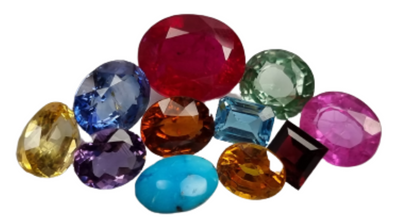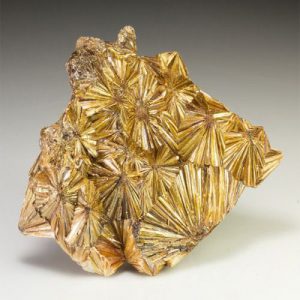Pyrophyllite: Gemstone Information
Pyrophyllite is a hydrous aluminum silicate mineral with the chemical formula Al2Si4O10(OH)2. It belongs to the phyllosilicate group of minerals, which also includes micas and talc. Pyrophyllite is known for its unique properties and various industrial applications. Here’s a detailed overview of pyrophyllite covering its properties, uses, occurrences, and significance.
Physical Properties:
Appearance: Pyrophyllite typically occurs as fine-grained, white, gray, or greenish-yellow masses, sometimes with a pearly or greasy luster.
Hardness: It has a Mohs hardness ranging from 1 to 2, making it a relatively soft mineral.
Density: The density of pyrophyllite ranges from 2.65 to 2.85 g/cm³.
Cleavage: Pyrophyllite exhibits excellent cleavage in one direction, producing thin, flexible sheets.
Chemical Properties:
Chemical Composition: Pyrophyllite is primarily composed of silica (SiO2) and alumina (Al2O3), along with variable amounts of other elements such as iron, magnesium, and water.
Hydration: Pyrophyllite contains water molecules within its structure, giving it a hydrous characteristic.
Occurrence:
Pyrophyllite is commonly found in metamorphic rocks, particularly in schists and gneisses.
It often forms as a result of the alteration of aluminum-rich minerals such as feldspar and kaolinite under low-grade metamorphic conditions.
Significant deposits of pyrophyllite are found in various parts of the world, including China, the United States, Japan, South Korea, Brazil, and India.
Uses:
Ceramics: Pyrophyllite is valued in the ceramics industry for its low thermal expansion coefficient, high refractoriness, and excellent machinability. It is used as a filler and flux in the production of ceramic bodies and glazes.
Refractories: Due to its high aluminum content and thermal stability, pyrophyllite is utilized in the manufacturing of refractory materials, including bricks, crucibles, and kiln furniture.
Paper Industry: Pyrophyllite is used as a filler and coating pigment in the paper industry to enhance paper properties such as opacity, smoothness, and printability.
Plastics and Rubber: It serves as a reinforcing filler in plastics and rubber products, improving their mechanical strength and dimensional stability.
Paints and Coatings: Pyrophyllite is employed as a functional extender and anti-settling agent in paints, coatings, and adhesives.
Cosmetics: In cosmetics and personal care products, pyrophyllite is utilized as an absorbent, anti-caking agent, and opacifying agent in various formulations such as powders, creams, and foundations.
Significance:
Pyrophyllite plays a crucial role in various industrial sectors, contributing to the production of a wide range of materials and products.
Its unique combination of properties makes it an attractive choice for applications where low thermal expansion, high temperature resistance, chemical inertness, and good machinability are required.
The availability of pyrophyllite deposits in different parts of the world ensures a stable supply chain for industries relying on its use.
In conclusion, pyrophyllite is a versatile mineral with diverse industrial applications, ranging from ceramics and refractories to paper, plastics, and cosmetics. Its physical and chemical properties make it an indispensable ingredient in numerous manufacturing processes, highlighting its significance in modern industry.





